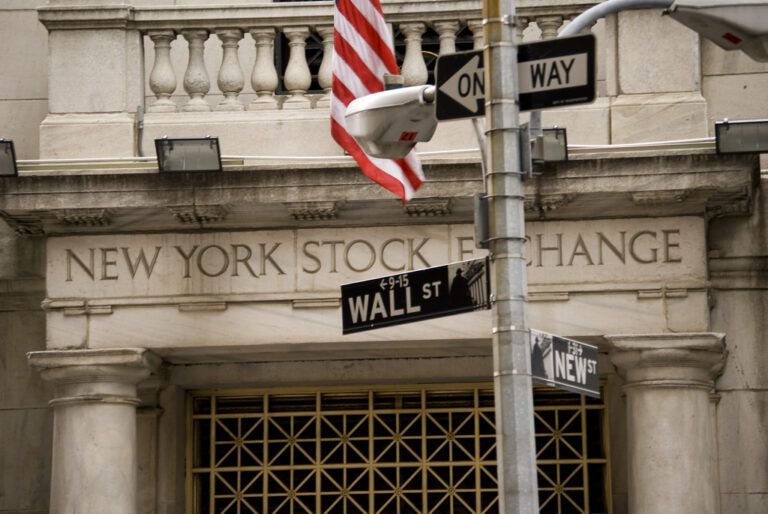As major Wall Street banks ponder if/when they should fully get into crypto, an ever-increasing number of their young talented employees are finding the charms of the exciting and potentially even more lucrative crypto space too hard to ignore. Here are just a few examples.
Deutsche Bank
Until March 2018, 29-year old Adrian Xinli Zhang had one of the coolest trading jobs you can get at an investment bank. Adrian, who started at Deutsche Bank in September 2015, was a Centralized Risk Book (CRB) Trader.
According to Christian Robbins, a headhunter at London-based Alpha Tradestone, central risk is “about quantitative systematic trading across multiple asset classes and has become very important”; not “many people know about it and fewer are capable of doing it.”
Bloomberg says it was last year, while working at Deutsche Bank in New York, that he discovered Bitcoin (BTC), and started trading cryptocurrencies. He was able to make enough money from crypto trading that in March, despite just having been promoted to Director, he decided to quit the bank. What is he doing now? Working on a crypto trading platform.
Goldman Sachs
28-year-old Christopher Matta joined Goldman Sachs in June 2011 as a Summer Analyst. It was around mid December 2016, when after five and half years of hard work, he was told that he had been promoted to Vice President. Two days later, he shocked his bosses by telling them that he wanted to leave. The lure of the crypto space was so strong that he didn’t even want to wait around until February to collect what was going to be a pretty big bonus. He says: “It’s safe to say, you leave a good amount of money on the table walking away from Goldman. But I saw it as a calculated risk.”
At Goldman Sachs, Chris was managing over $7 billion in assets for the Goldman Sachs Philanthropy Fund and Trust Company in the Investment Management Division. He says on his Linkedin profile that, additionally, he “performed due diligence on asset managers and identified alternative investment opportunities, which led him to recognizing cryptocurrencies as an unparalleled portfolio opportunity due to the asset’s exponential, uncorrelated returns.”
What Matta, and two of his former Goldman Sachs colleagues, twenty-somethings Ali Hassan and Michael Kazley, wanted to do was to set up their own cryptocurrency investment firm, Crescent Crypto Asset Management. Matta explained his reason for not wanting to stay at Goldman until February 2017 as follows:
“In the crypto world, every month is like a year in the equities space. The amount of things that would change in that time, the number of funds that would come to market, it would just be a much more difficult landscape for us if we were trying to get things up and running in February.”
His new firm’s flagship fund is “The Crescent 20 Private Index Fund.” This fund, which is currently limited to accredited investors (able to invest a minimum of $100,000), “seeks to replicate the performance of the largest cap, and most liquid cryptocurrencies in the world”; it “covers approximately 80% of the market cap of the entire crypto-universe, and is rebalanced regularly.” Basically, this is an index fund made up of the 20 largest cryptocurrencies; the firm charges 2 percent of assets under management.
JPMorgan Chase
35-year-old Amber Baldet got featured (in 31st place) last year in Fortune's “40 Under 40” list, which highlights the most influential young people in business; 24-year-old Vitalik Buterin, co-founder of Ethereum (ETH) was at 10th place on the same list. Amber was there because of her contributions in the area of blockchain technology at JPMorgan Chase. At the time, Amber was the product strategist for the bank’s Quorum project, a private blockchain that is essentially an enterprise-focused fork of Ethereum.
It was early in Apri 2018, when Baldet, left the bank after working there for almost six years to start her own business. And a few weeks later, on 14 May 2018, she announced the launch of her new blockchain startup, Clovyr, which she was co-founding along with her former JPMorgan colleague, Patrick Nielsen (who was the lead developer of the bank’s blockchain projects).
On the same day, she gave a demo of the product Clovyr is building at the Consensus 2018 conference in New York City. Here is a screenshot from this demo:

According to her interview with Fortune:
“Clovyr’s product… is slated to take the form of something akin to an app store, where people and businesses can experiment with a multitude of decentralized apps and services, developer toolsets, and underlying distributed ledgers. The cofounders envision the platform serving as a neutral ground, offering a browser-like dashboard for the blockchain-curious, through which Clovyr can provide support and other services to customers according to their needs.”
Here is how Finextra describes the system Clovyr is building:
“Clovyr is creating a blockchain ‘Greenhouse’ that will house tools designed to make it easier to collect, store, and disclose data to the wider community. Users will be able to compare developer apps based on their privacy model, published security audit results, core team size and business model. It will also be possible to explore and import libraries of elements sourced from community repositories as well as audited contracts built by Clovyr.”
Featured Image Credit: “Wall Street” by “Wagner T. Cassimiro” via Flickr’ licensed under “CC BY 2.0”









